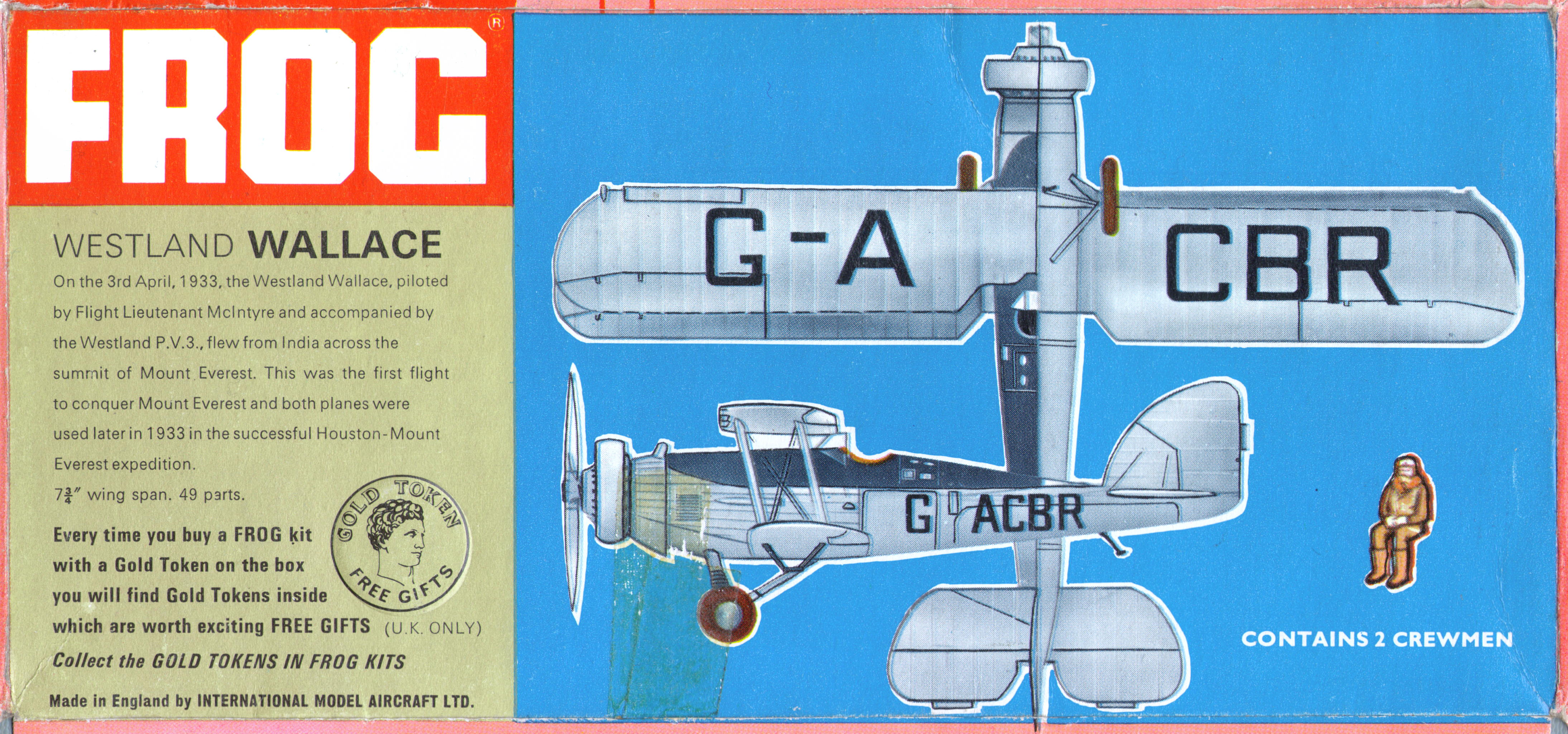





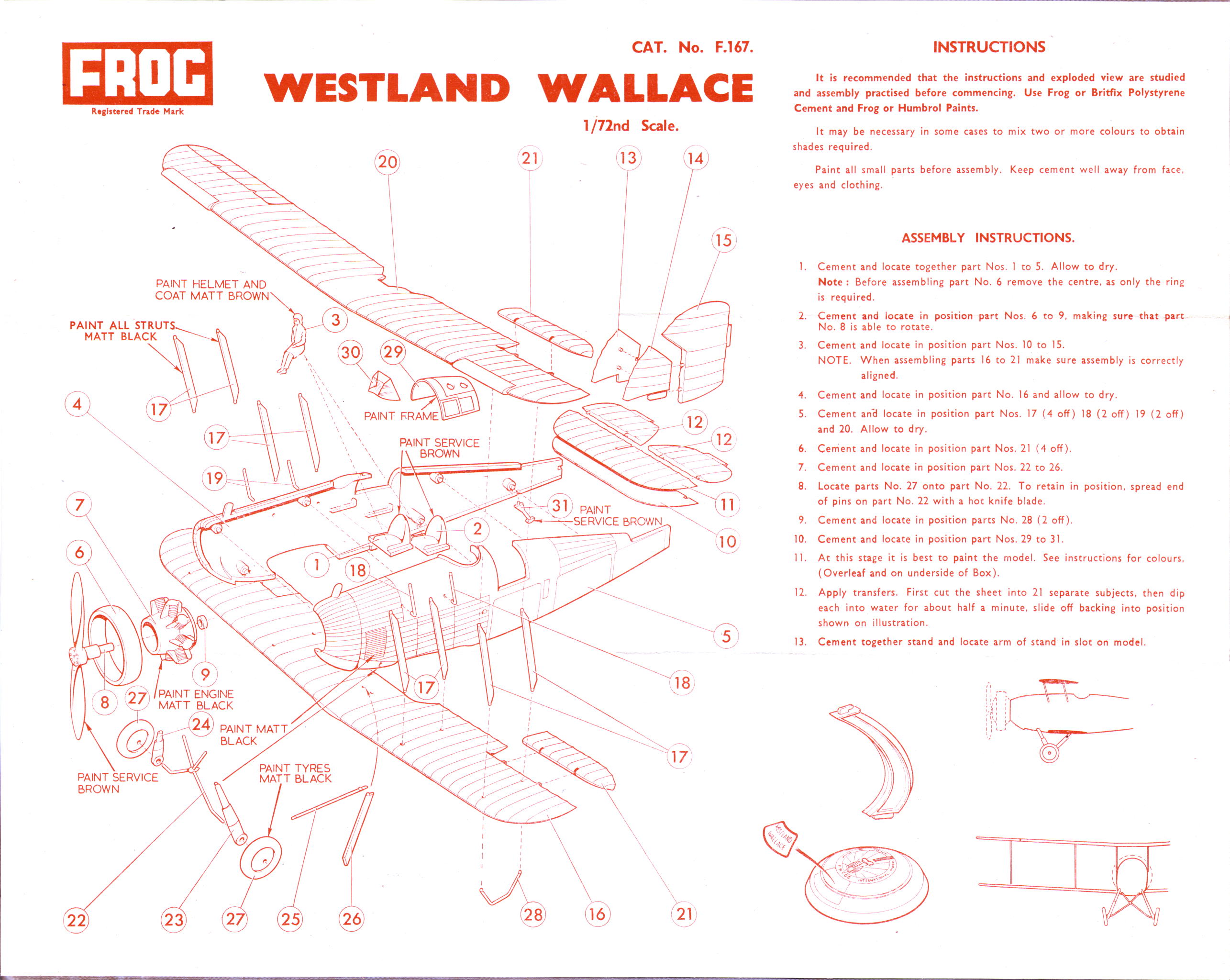
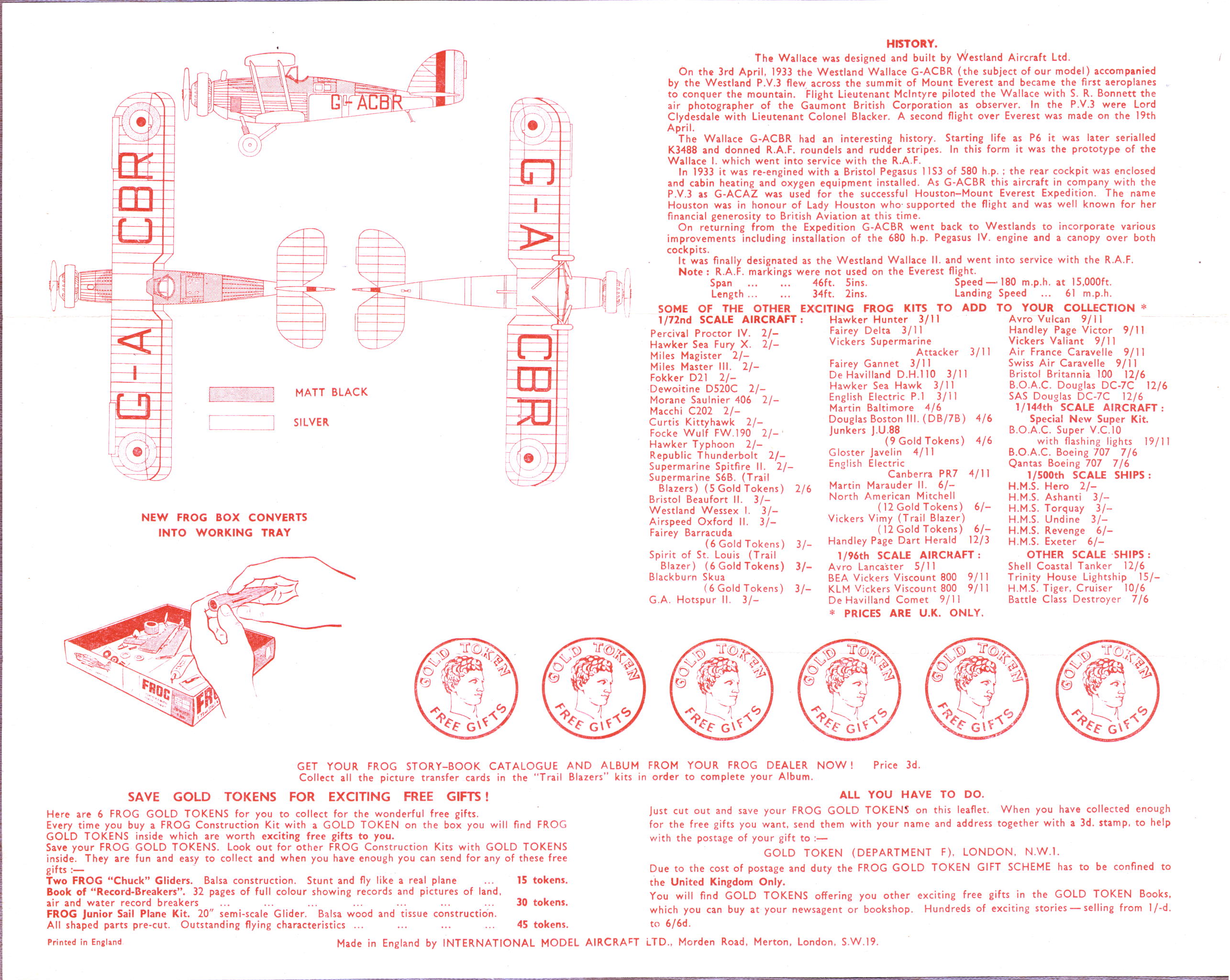
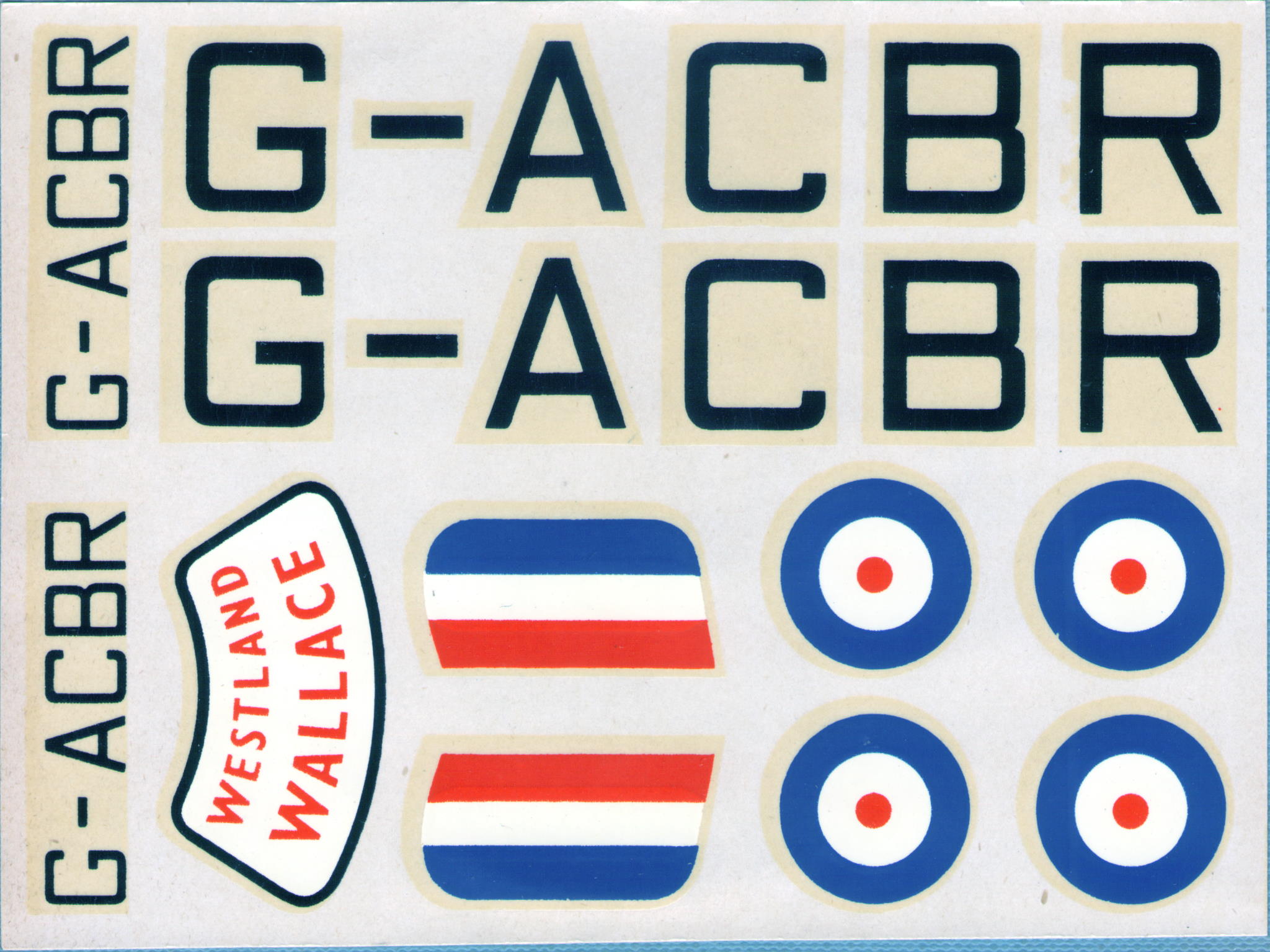
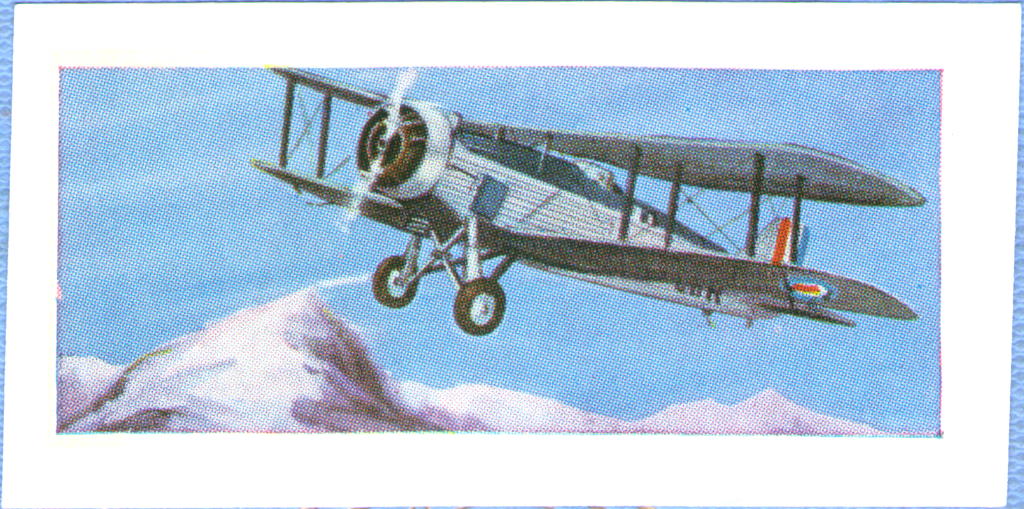
|
Trade Notes
From Frog this month comes the "Westland Wallace", a truly unusual and historic subject. Famous for the successful Houston-Mount Everest expedition. FROG's replica of this little known aircraft goes together beautifully from 31 parts. Registration letters G-ACBR are provided in the kit together with R.A.F. roundels and rudder flashes, so that a model of the R.A.F. version can be produced, though the "greenhouse" of a canopy is not provided. Price is 3|-.
While with Frog it would be well in compliment this firm on their sensible kit box design. This instead of comprising lid and a base as two separate units, is all in one, with a fold along the back edge for the lid. When opened, the box fods out to provide a simple working tray from which even the tiniest plastic part is unlikely to be lost having said that where is our port aileron..? ...suffers only from an oversize ...ailerons (...a minor fault in the Wallace).
AeroModeller 1965-02
Recent Kits
Still more biplanes
While on the subject of biplane kits we have not up till now mentioned in these columns a kit from "Frog" which is worth getting for its own sake and also provides scope for experimentation. This is the Westland Wallace. The version selected is the high-altitude aircraft which was one of the first two aircraft over Mount Everest in 1933- The model is accurate and well-detailed and makes up well. What will attract many modellers is the potentiality in this kit to convert to a standard Wallace day-bomber or to a Westland Wapiti. Both these are possibilities and it seems a pity that "Frog" did not incorporate in the kit an alternative rear cockpit with gun ring, etc. This needs to be built up for a standard Wallace and the engine modified for a Wapiti. Doubtless this will present few problems to the experienced modeller who will jump at the chance of adding to the far too small range of interesting inter-war models available in kit form today.—
J. D. R. RAWLINGS.
AIR PICTORIAL Vol. 27 No. 7 July 1965
CONQUERORS OF EVEREST
Houston-Westland (Converted P.V.3) For the Houston Mount Everest Expedition of 1932/33 two aircraft, with an operating ceiling of at least 33,000ft, were required. In the book First Over Everest, the authoritative account of the expedition, it is
stated: —
"The selection of the aeroplanes was by no means easy, having regard to the prominent part played by the engine. At first sight it would seem that an engine like the Pegasus would pull almost any well-designed modem aeroplane of suitable characteristics to the immense height called for by the task. Investigation proved that there were not many aeroplanes suitable for the flight. Naturally, the machine had to be a two-seater. . . . Then again otherwise suitable aeroplanes were inadmissible owing to low undercarriages. Our machine must have a propeller of unusual diameter in order to grip the thin air, and we had to foresee the possibility of taking off from aerodromes covered with sand, gravel or small stones. Should the propeller tips come too near the ground, there was danger of their being damaged from flying fragments. . . . Even with all these points suitably adjusted, it was as well to have a machine with a deep and broad fuselage in which the observer could handle his numerous cameras without becoming hope-lessly congested. Our final choice rested on the Wesdand P.V.3, which we never regretted."
The engine installed was the highly supercharged Bristol Pegasus IS3. The aircraft was lightened as much as possible, a process involving deletion of the wheel brakes and wheel fairings, and substitution of a tail skid for the existing tailwheel. The observer's cockpit was faired in to give protection, and springs were incorporated in the controls to compensate for unequal contraction of metals at great altitudes.
Early in 1933 final tests were made by Mr. Penrose, who ascended to a height of 37,500ft, and on April 3rd, piloted by Lord Clydesdale and with Lt-Col. L. V. S. Blacker as observer, the Houston-Westland, in company with the special Wallace mentioned below, accomplished the historic flight over the great mountain.
Eventually the P.V.3 came home to Yeovil, and thereafter served out its days as a flying test bed for Bristol engines.
Wallace (Everest Conversion) As a second string for the Houston Everest Expedition, the original Wallace was fitted with a Pegasus IS3 engine, was lightened in the manner described for the Houston-Westland, and the rear cockpit was faired in. For the actual assault, the pilot was F/L. D. F. Mclntyre, now managing director of Scottish Aviation, Ltd., who carried as passenger Mr. S. R. Bonnett, a Gaumont-British photographer.
Flight 1955-04-15 №2412
Westland P.V. 6 (Wallace)
| | F167 | 1964-1971 | F1(R) | 130000 | G-ACBR |
| + | F167 | (1973) | -(R) | - | (?) |
Trail Blazer. In 1970 it was considered to convert the mould into a Wapiti, but this was never carried out.
FROG model aircraft 1932-1976, R. Lines, L. Hellstrom
|
|




